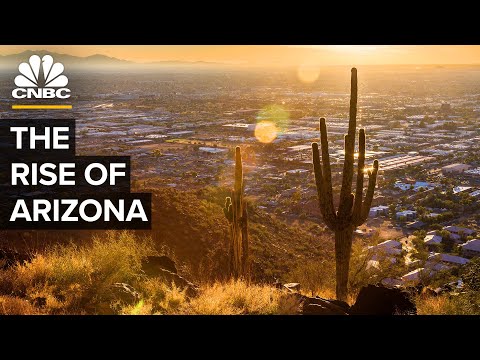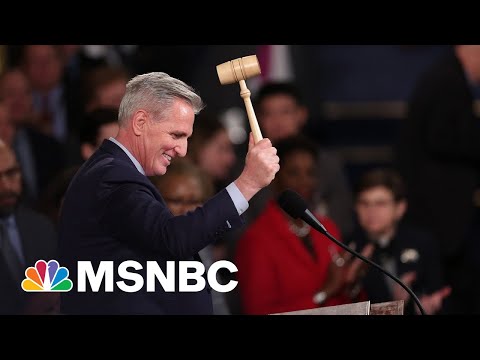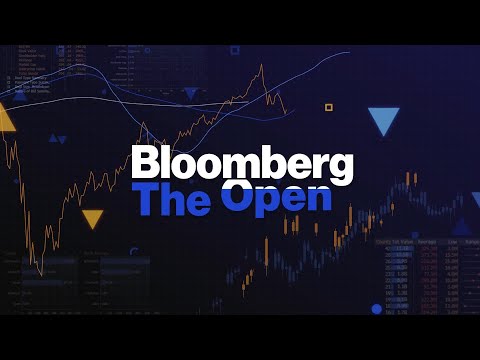Why Arizona Is Becoming A Hotbed For Tech

Unknown: Arizona – land of snowbirds and the Grand Canyon, retirees and ATVs – is rapidly gaining a reputation of an entirely different sort. It's becoming an epicenter of electric vehicles and self driving tech, as well as a new surge in semiconductor manufacturing as the US tries to address the worldwide chip shortage. I would say Arizona is the semiconductor capital of the world. This is going to be the hub. Intel's $20 billion investment in Arizona, building two new fabs, and Taiwan Semi is something that I don't think has gotten the attention it deserves. Taiwan Semiconductor or TSMC is indeed building a $12 billion chip manufacturing plant in Phoenix. Tesla rival Lucid motors built a brand new electric vehicle factory in the state along with Nikola and ElectraMeccanica. And Waymo's,
fully driverless rides are now available to the public in Arizona only. It's the cost of living. It is the great environment. People love it. People love to be in Arizona and I think that also helped us to attract talent all over the place. In 2020, Phoenix attracted more residents than any other US city for the fourth year in a row. 634 companies relocated or expanded in Arizona between 2015 and 2020 creating 13,000 jobs in manufacturing alone. We headed to the desert to ask the
governor, big companies, and those living amidst the boom, how is it changing the state and why Arizona. The sixth largest state by area, Arizona first became well known when a major mine opened there in 1854. And copper mining remained its primary industry for nearly a century. Slow to
grow, it became the 48th state in 1912 and didn't experience a population boom until after World War II when air conditioning became widely available. Phoenix has been growing ever since now surrounded by a vast sprawl of suburbs and agriculture. Everybody knows the five C's of Arizona: copper cattle, cotton, climate and citrus. I think you could add two maybe three additional C's, you've got chips, you've got electric cars, and you've always had construction as well. During World War II, GM started using about 4000 acres outside Phoenix to test parts it's applied to US Army tanks.
Toyota, Ford, Chrysler and others were all soon testing their cars on Arizona tracks, too. Aerospace manufacturing has also been huge. Raytheon has made missiles in Tucson since the 50s and recently expanded there. Boeing has built its Apache helicopters in Mesa since the 80s. In 1969, Motorola kicked off another state trend when it began manufacturing semiconductor wafers at a factory in Mesa. But during the Great Recession, 300,000 Arizonans has lost their jobs and home values were down $100,000. So in 2011, the
Arizona Commerce Authority was formed to attract new high paying jobs. One of the first big wins came in 2015 when Apple invested $2 billion to build a data center outside Phoenix. In the years since the list of companies relocating or expanding and Arizona has exploded. Caterpillar, Infosys Benchmark Electronics, Blue Yonder, Insight, Zoom, Cognizant, and many more. Businesses growing in the state in the last decade have promised to bring almost $34 billion and 191,000 new jobs in exchange for some big incentives.
We have a Foreign Trade Zone program. We also have some quality job tax credits. So as a company creates jobs and makes capital investments, those programs are available to all companies. Filling all these new jobs are lots of high skilled workers flocking largely from California to states with a lower cost of living while the pandemic allowed them to work from home. If I can work in Arizona, I can have twice the house, a newer house, with a pool. The cost of living is cheaper, my taxes are cheaper, and I can tele-work. Why wouldn't I live out here?
Real Estate Agent and single dad Chris Barker was raised in Arizona. After 16 years in Maryland. He moved back to Phoenix with his two teenage kids during the pandemic last year, but it wasn't the same. A lot of the beautiful things that I used to enjoy about Arizona have kind of gotten spoiled; Slide Rock in Sedona, Snowbowl. All these like cool places that Arizona had to offer, well now there's just such an influx of people that it's almost miserable. I can see like the pollution is thicker. There has been obviously a lot more traffic.
But for many, the cost of living is still a big plus. The cost of living in San Francisco is three times Arizona. So we had a lot of people locating here and working virtually from our state. Now they want to stay here.
The business friendly regulatory environment and lower taxes are also a draw. The Tax Foundation ranks Arizona 24 for business tax climate while California comes in for 49th. In Arizona, we've eliminated – wipe off the books – 2751 regulations since 2015. That's the equivalent of $150 million
tax cut, and that's the direction Arizona is going to continue to go. This, coupled with Arizona's long history of manufacturing, has helped the state attract an entirely new industry: electric car companies. Although Arizona lost a bid for Tesla's first Gigafactory to Nevada in 2014, the state's big break into EV's came in 2016, when Lucid Motors announced it would build its $700 million electric car factory in Casa Grande.
We had an extensive survey of about 65 sites right across the US against a whole range of criteria. And we made a really good decision here to come to Arizona. And then there's Arizona is proximity to Mexico, where companies are making components for GM electric vehicles and for Lucid. It was our third interview with Lucid, the final question was, how is your relationship with Mexico? And Mexico is Arizona's number one trading partner, it's not even close. EV companies in Arizona can easily access supplies from nearby California and beyond via a major railroad system and I-10, a major trucking route. That was the very attractive thing about Arizona that we have this, being close to supply chain, being close to our headquarters, having enough space to grow. That's what we
found here. Lucid broke ground on its 590 acre factory in 2019. After some delays, Lucid says it's Air Dream Edition is now in production there with customer deliveries coming later this year. The workforce work grow far north of 4000 people there. Electric semi truck maker Nikola, which made headlines for some big missteps last year, is headquartered in Phoenix. It's
building a new factory in Coolidge, Arizona, scheduled to start producing its Nikola Tre in 2022. Phase One of Coolidge is basically done on the exterior. So now it's all the interior work at this point. It's on
schedule. We should, we intended to have that first phase complete and in operation this year, and we're on track to do that. Another electric vehicle being manufactured in Arizona is the single-seat three wheel Solo. ElectraMeccanica says its new factory in Mesa, which just broke ground, will create 500 jobs and eventually produced 20,000 Solos per year starting in early 2023. It's also creating sharing pods of Solos,
similar to short term rentals of electric bikes and scooters. Between being near our target market on the West Coast and the willingness for these five municipalities to test that Solo share, that was probably the tipping point for us. That really helped us decide on Arizona.
Rivera says access to the EV supply chain, much of it now being manufactured in-state was a huge factor in choosing Arizona. The secondary supply chain, the tier one suppliers who are all going to support us in addition to those that are already here supporting Lucid and Nikola for example. UACJ Whitehall, a leading supplier of aluminum components for EVs, just announced its opening a new plant in Flagstaff. Lithium-ion batteries are also a crucial part of the EV supply chain. And battery recycler Li-Cycle is now building a new recycling facility in Gilbert, Arizona.
And now Atlas Motor Vehicles, known for its electric XT pickup truck, recently announced it's building a production line for battery packs and cells at its headquarters outside Phoenix. A number of our employees that came from California, they love that, for the price of an apartment with three roommate, they can have a house and live by themselves, and that's very appealing, but they still have the benefits that they had in California. On top of a growing supply chain and robust manufacturing, Arizona is known for ideal testing conditions for vehicles.
Six major test tracks or proving grounds are scattered in remote Arizona deserts where major car companies can discreetly test their new cars. GM, Ford, Toyota, VW, Chrysler, and Nissan all tests their cars on these tracks. Low rainfall and winds allow testing almost every day of the year. The extreme desert
heat is also a draw. Here in the summer, it's as hot as it gets anywhere, which is not great when you're in the middle of it. But it's great for testing vehicles in hot weather. Arizona is now one of the first testing grounds for driverless cars, too. They've become a common sight in some cities
surrounding Phoenix, which have ideal wide streets for testing designed on a grid. I think that there is truth to the fact that the infrastructure here is fantastic, right? But I think that the bigger and more appealing attraction is the forward... dynamic and forward thinking government here and the fact that, you know, you're bringing companies like Uber and Waymo, Cruise, the willingness to allow those kinds of companies to test. In 2015, Governor Ducey signed an executive order allowing testing of autonomous cars on public roads. Since then, Waymo, Uber, Chevy, Ford and Cruise have all tested their self driving cars in Arizona, although Uber sold its self driving division last year. Five years after it began testing in
Chandler, Arizona, Google's Waymo now offers fully driverless rides to the public there. Now Walmart is testing self driven deliveries by GM-owned Cruise cars in Scottsdale and autonomous semi truck company TuSimple announced a major Tucson expansion in January before going public in April. We are the first and only autonomous driving company to be publicly traded. It's really a validation of our shareholders' confidence in us and our technology.
Semiconductors, which have a long history of being made in Arizona, are another crucial part of self driving tech and the electric vehicle supply chain. Intel started making chips there in 1980, and now has plans to rapidly expand in the state as demand surges. Chips are in short supply after the pandemic have ended supply chains and caused consumers to buy more electronics. Intel, which says its tech powers nearly all autonomous vehicles, has four factories in Arizona and two more on the way. Today Intel is announcing a new $20 billion investment, the largest private sector investment in Arizona history.
These facilities will add 3000 high tech, high wage jobs to the state of Arizona. Amid the worldwide shortage, the US share of global chip manufacturing fell from 37% in 1990 to just 12.5% in 2019. The world more than ever is counting on Intel to deliver, you know, innovative products.
Intel's two new Arizona factories are scheduled to be online by 2023 and will make Arizona its biggest manufacturing site in the world. And it's far from alone. TSMC, the world's largest contract chip manufacturer with customers like Apple and Qualcomm has a goal to manufacture 20,000 chips a month and its new Phoenix fab by 2024, the first factory of its kind in the US, Arizona is considered one of the top four states in the country for the concentration of semiconductor talent. This will continue to elevate Arizona's position to a top state in the country.
Chips are vital for powering our modern lives. But making chips takes an incredible amount of water; two to 4 million gallons of water a day for a typical fab. And water is not exactly plentiful in the desert. Arizona's biggest water source is groundwater, which is accessed by wells. But deeper and deeper wells at big farms are using up groundwater faster than it's naturally replenished. So some manufacturers have added
on site water recycling at their factories. Overall, a lion portion of our water is reclaimed. In order I would say more than you know 80 to 90% is reclaimed. So that's very, very significant. And we use in billions of gallons, you know, per year for the overall company.
Intel says it treats 9 million gallons of water a day, adding much of it back into the local supply for things like irrigation. Arizona has a history of reusing almost all its grey water to cool power plants and to water fields, storing water banks in underground aquifers and restricting irrigation in urban areas. We are using less water today than we did in 1957 with six times the population. No one is better in the country than Arizona with water. Israel's probably the best in the world at water with Arizona right behind them, taking advantage of the generational projects like the Central Arizona Project and then the Drought Contingency Act that we passed in this administration.
And before that we had the Groundwater Management Act. So we continue to focus on water. Major tributaries, and 336 miles of manmade canals allow 36% of the state's water to come from the Colorado River. The growth has not been limited by water at this point. The
water that's here is extremely well utilized. The Colorado River sometimes doesn't even make it to the ocean because it's all used, every drop of it. Lucid also recycles the water it uses to make the Air. So we have a water treatment system in our plants, so we double treat the water and we put it back into the system. Making cars and chips takes a huge amount of energy, too. US News and World Report ranks Arizona as the second most reliable power grid in the country, and its energy costs about half of California's industry rates.
What I would say is great about Arizona is just the overall infrastructure when it comes in to power, when it comes to the stability of what we need to count on to run this world class operation. 14% of Arizona's electricity comes from renewable sources, thanks largely to its ranking as the sunniest state. It generates the fourth most solar power of any state and ranks second in solar energy potential. But all that consistent sunshine also means intense heat. At an average of 99.1 degrees, Phoenix had its hottest month ever recorded last August, and last year was the driest on record for the state. Although Arizona doesn't suffer from the myriad of natural disasters that California and Texas face, the state does have dust storms, flash flooding, and significant fires.
I think there's a lot of people who are moving here who have not moved here during the summer. So I'm like, I don't know if they know what they're quite getting into. But in recent years, the heat certainly hasn't kept people away. Arizona's population has been on a steady rise for the last decade, up 13.9% between 2010 and 2019. The upside for
the incoming EV companies and chip manufacturers is the availability of skilled workers. We are graduating 9000 students a year from our three universities in the semiconductor industry. In CNBC, his most recent top states for business rankings, Arizona came in 20th. But when looking specifically at workforce, Arizona ranked second, and many of those workers are coming from California. U-Haul, which itself is headquartered in Phoenix and two manufacturers much of its equipment in Arizona, found California was the top state people moved to Arizona from. More than 10,000 truck customers
rented one way from California to Arizona in 2020, making Arizona fifth on its annual list of growth states, up 15 spots from 2019. There's no denying that all these people, especially from wealthy California, are changing the fabric of Arizona, starting with the real estate market. While Arizona comes in right at the middle of the cost of living index, a typical Arizona home value is about $329,000, about half the typical home value of California, at least for now. My mortgage is three times less than what our rent was in Seattle. During the pandemic last year, Arizona native Brooke Sanders-Silverman and her family moved back to 1000 square foot home that she bought in Tucson in 2010. When you have a four year old running around, it's like the space gets a lot smaller, quicker.
They intended to quickly upgrade to a bigger house. Probably three to four days a week either by mail or phone, I get an offer to buy my house for full cash. But she declines these offers because her own home search has been unsuccessful. She put in an offer $10,000 above asking price on her dream home in September, and another offer a couple months ago. We went in for full offer and I think it went for about 100 over. I'm just baffled by these all cash offers, sight unseen. They don't want to inspection.
The cost of living has gone up so much that I don't think a lot of retirees can afford the current housing market. As a whole, we're looking at anywhere between 30 and 40% increase from July up until now of home values. And that's nuts. Can you walk over here? Sanders-Silverman's daughter is starting kindergarten next year, and CNBC ranked Arizona schools all the way down at 47th. Her parents were both teachers in Tucson. What are teachers make here is offensive. I mean, there's no
way that they're going to be able to stay here if our, you know, cost of living keeps elevating the way that it is in the last few months. And so if we continue to lose our teachers and our good teachers because they can make way more in another state, then I think our education is going to continue to decrease. Aside from pricing our existing residents, the population and manufacturing booms have also led to worsening pollution with the American Lung Association finding that nearly all Arizonians are breathing unhealthy air with Phoenix and Tucson worsening in all categories last year. The
population boom is shifting Arizona's politics, too. When Biden won Arizona in November, it was the first time Arizona turned blue since 1996. You'll see a lot of flags of Commie-fornia. You know you can
visit but leave your politics at home. California is chasing people out, they're punishing people and producers with lack of a quality of life, with onerous taxes and regulation. Arizona is going to remain Arizona. As more young professionals relocate from states like California, and the states Asian and Latino population grows, too, it's no surprise that demographics and politics are changing. The state also had a large voter turnout from members of its 22 Native American tribes.
As more and more people move here from Washington State and California, there is a very big undercurrent of people that are upset about it and they hate it, you know, because not only are they making this place unaffordable for the people that are considered native or have lived here for a long time. But they're also changing the politics. Regardless of politics, Arizona is certainly changing as new people and new EV and chip companies solidify its reputation as a hub of advanced manufacturing. It really has become a center of excellence here that's just going to get bigger and more important as we go forward. Because there's enough momentum now I think that's inevitable.
2021-05-18 08:27


